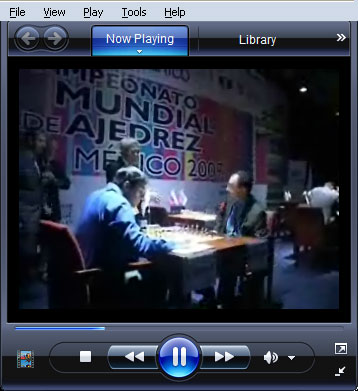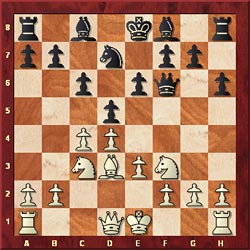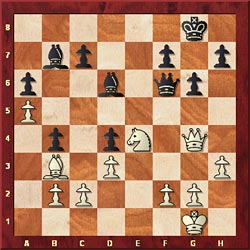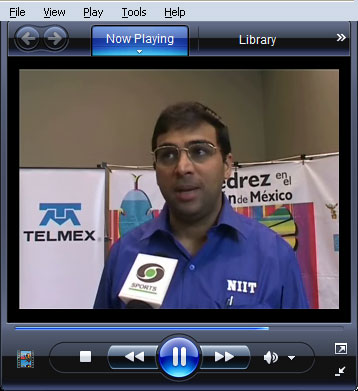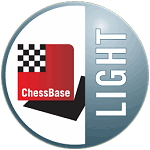
World Championship 2007 Mexico
The World Championship 2007 will take place from September 12 to 30 in the
Sheraton Centro Histórico Hotel in Mexico City. Eight players are qualified
– the tournament will be a double round robin. The prize fund is US $1.3
million.
Round one commentary
Commentary by GM Mihail Marin
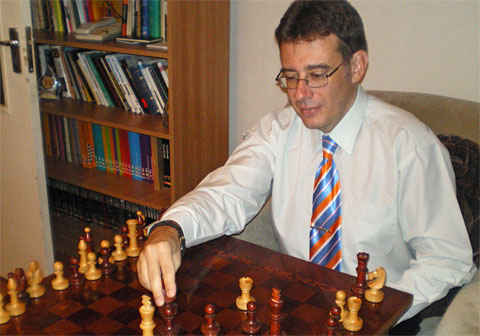
GM Mihail Marin in his analysis kitchen at home in Romaina
The following express commentary was provided by Romanian Mihail Marin,
who is the author of a number of very popular ChessBase training CDs and articles
for ChessBase Magazine. GM Marin will study the games of the World Championship
tournament in much greater detail and provide the full results of his analysis
in the next issue of ChessBase
Magazine.
A slightly dissapointing start of the World Championship. True, in all the
games the position after the opening promissed a sharp and spectacular fight,
but after the 20th move the players' fighting mood suddenly dropped down and
all the games ended peacefully before the 30th move was reached. In one case,
one of the player would have been entitled to play on at least for a while;
in another game the position was simply too complicated to be adjucated as "drawn".
Let us hope that it was all about fatigue after the long trip and problems of
aclimatization and that we shall see longer games in the next rounds!
Morozevich (2758) - Aronian (2750)
World Championship Mexico (1), 13.09.2007
1.d4 Nf6 2.c4 e6 3.Nf3 b6 4.a3. The so-called Petrosian (or Petrosian-Kasparov)
Variation, played for the first time in the game Sultan Khan-Capablanca. The
mysterious Indian player won in great style, but we cannot know whether he was
aware of the subtle character of his invention, since he used to play a3 or
...a6 in the opening quite frequently. (This was how the so called Chebanenko
Slav was born, too). 4...Bb7 5.Nc3 d5 6.cxd5 Nxd5 7.e3
Morozevich is known as one of the most creative and original players of the moment.
Some 10 years ago, he used to deviate from the approved paths as soon as possible
(for instance, on the second move; just think of the almost forgotten Chigorin
Defence and Albin Countergambit). Lately, he has changed his attitude a bit, by
producing stunning novelties in well-established openings. Let us see what he
has in mind for today.
7...g6 This move, transposing to some sort of Gruenfeld,
came into the limelight after Korchnoi used it to defeat a young player named
Kasparov in the first game of their Candidates' match in 1983.
8.h4 So,
this was his idea. However, this slightly extravagant move is not really new.
Among others, it has been tried by Polugajevsky against Korchnoi.
8...Bg7 9.h5
Nd7 10.Bd3 Nxc3 11.bxc3 e5
A counter-action in the centre is the best answer to an attack on the wing. However,
White's centre is solid enough yet.
12.Qc2 Qe7 13.Be4 Bxe4 14.Qxe4 0-0 15.hxg6
hxg6. Aronian correctly evaluates that White cannot create dangerous threats
along the h-file. Capturing with the other pawn would have meant a significant
structural concession.
16.a4 c5 17.Ba3 Rfe8
In one of the two Gruenfelds Aronian lost with White against Svidler, the structure
was almost identical. Now, he shows that he learned something from the unpleasant
experience. White cannot maintain his stability in the centre for too long.
18.Rc1 exd4 19.Qxe7 Rxe7 20.cxd4 Re4 21.Kf1 cxd4 22.exd4 Nf8 23.g3 Rd8 24.Rc7.
A curious situation. White is not fully developed yet, but the hyper-activity
of some of his pieces allows him maintain the balance even. 24...Ree8 25.Rxa7
Ra8 After exchanges on a8 anf f8, followed by Kg2 and Rb1, the game will
transpose to a dead drawn rook + 2 pawns vs rook + 2 pawns ending. For once
in this round, the draw agreement looks entirely well timed. 1/2-1/2.
[Click to replay]
Kramnik (2769) - Svidler (2735)
World Championship Mexico (1), 13.09.2007
1.Nf3. This is precisely the starting move that led Kramnik to the
highest peaks of his carrier. He abandoned it for the slightly more aggressive
1.d4 only with the occasion of his match against Kasparov. Later, he experimented
with 1.e4, without too much success. Now, the cycle seems to start again. 1...d5.
Svidler occasionally employed this move as an emergency exit after losing
three games with the Gruenfeld in Morelia/Linares 2006. His overall result in
t e closed openings was not really satisfactory either, but we can assume that
for the World Championship he is better prepared. 2.d4 Nf6 3.c4 c6 4.Nc3
e6 5.Bg5 h6 6.Bxf6 Qxf6 7.e3 Nd7 8.Bd3
No big surprises from White's part yet. This position made part of Kramnik's repertoire
in his chess youth. Although in more recent years he has flirted with the ultra-sharp
6.Bh3, too.
8...g6. Of course. A Gruenfeld specialist would take the first
opportunity to develop his king's bishop in fianchetto.
9.e4 dxc4 10.e5 Qe7
11.Bxc4 Bg7 12.0-0 0-0. The structure vaguely resembles a Gruenfeld, indeed.
We just have to remove the b2- and c6-pawns. However, the presence of these pawns
gives the game a rather closed character, without the possibility of active piece
play as in Svidler's favorite weapon. On the other hand, White cannot crush his
opponent by advancing his central pawns , which is a permanent danger for Black
in the Gruenfeld.
13.Re1 Rd8 14.Qe2 b6 15.Rad1
White is the first to have completed his development, but the relatively closed
character of the centre prevents him to take immediate advantage of this circumstance.
15...a5 16.Bd3 Bb7 17.Be4 b5 18.h4. Since there is not much to do in the
centre, White starts a typical operation on the kingside, aiming to weaken the
light squares from the neighborhood of the enemy king.
18...Nb6 19.Bb1. Clearing
the e4-square for the knight (in view of ...b4), but releasing the pressure along
the e4-a8 diagonal.
19...c5 20.Nxb5 Ba6 21.h5 g5 22.Nh2 Rxd4 23.Rxd4
It looks as if Black has adequate counterplay in the centre, but the position
is anything but drawish. On the other hand, travelling from Europe to Mexico
must have been quite tireing and the opponents know eachother so well since
childhood, so that the abrupt end is not completely illogical. 1/2-1/2.
[Click to replay]
Grischuk (2726) - Leko (2751)
World Championship Mexico (1), 13.09.2007
1.e4 e5 2.Nf3 Nc6 3.Bb5 a6 4.Ba4 Nf6 5.0-0 Be7 6.Re1 b5 7.Bb3 0-0 8.h3
Bb7 9.d3 d6 10.a3 Qd7 11.Nc3 Rfe8
12.a4. If the game was played during the pre-computer era, I would have
thought that there must be a misprint in the newspaper. White had just played
10.a3 and now advances the pawn again. However, since the game is transmitted
live, I suppose there is no mistake at all. I will have to understand the subtleties
behind this apparent loss of time before writing my "final" notes for
CBM 120.
12...b4 13.Ne2 d5. Strategically, this is a double-edged decision.
Black wins space in the centre, but leaves the c4-square chronically weak.
14.exd5
Nxd5 15.Ng3 Bf8. Black has regrouped just in time to defend his central pawn
without the necessity of weakening his kingside with ...f6.
16.a5. An important
decision. White did not want to live with the permanent threat of ...Na5 (and
if Ba2, then ...b3!?). On the other hand, the a5-pawn is cut off his brothers
and could become weak in certain cases, but this also applies to the black a6-pawn.
16...Nd4 17.Nxd4 exd4
Suddenly, it appears that Black is better developed. White's defensive resources
rely on his solid position and his stability on light squares.
18.Bd2 Nf6 19.Rxe8
Rxe8 20.Bg5 Qc6 21.Qf1 Qd6. The point behind this apparent loss of time (less
difficult to understand than a3-a4) is to prevent the enemy queen from developing
naturally to d2.
22.Re1. However, the tempo offered to White proves useful.
He can simplify the position further, neutralizing Black's advance in development.
22...Re5 23.Rxe5 Qxe5 24.Bxf6 Qxf6 25.Qe2 g6 26.Qg4 Bd6 27.Ne4
The position has changed to White's favour. All his pieces are more active
than their rivals. 27...Qf4 28.Qxf4 At first glance, White's decision
to offer a draw looks premature. Grischuk (2726)-Leko (2751)/Mexico 2007
[After 28.Qxf4 Bxf4 29.Nc5 Bc8 30.Bc4 Black loses a pawn. However, after 30...Bd6
31.Bxa6 (31.Nxa6 offers Black a choice between 31...Bxa6 32.Bxa6
b3 33.cxb3 Bb4 with a dead draw and 31...c5, trying to trap the knight.)
31...Bxa6 (Black can obtain an opposite coloured bishops ending
with 31...Bxc5 32.Bxc8 , but the structure is complex and the a-pawn
rather advanced. It is not easy to be 100% sure this is a draw.) 32.Nxa6
c5 the knight is trapped.] 1/2-1/2. [Click
to replay]
Anand (2792) - Gelfand (2733)
World Championship Mexico (1), 13.09.2007
1.e4 e5 2.Nf3 Nf6 Gelfand is a renowned Najdorf specialist. However,
for sich important events he seems to prefer more solid openings. He defeated
Kasimdzhanov with the Petroff Defence in the third and last game of their play-off
in Elista, but it should be said the result of the opening was anything but
encouraging for Black. 3.Nxe5 d6 4.Nf3 Nxe4 5.Nc3 Nxc3 6.dxc3 Be7 7.Be3 Nd7
8.Qd2 Ne5 9.0-0-0 0-0 10.h4
White starts advancing his kingside pawns, openly declaring his intentions
to mate the enemy king. His own king is out of any immediate danger. 10...Re8
11.h5 Bf6 12.Nh2 h6 13.Be2 Be6 14.f4. However, this might be a bit
exaggerated. Black did not do anything wrong yet (he just developed in natural
way) to deserve such a treatment. White weakens his central squares, while his
centralisation is far from optimal. Just look at his knight. 14...Nc4 15.Bxc4
Bxc4 After the elimination of White's light-squared bishop, Black can regroup
easier. 16.b3

16...Bb5. This is the kind of move one plays without too much thinking.
However, Black had here the stunning 16...c5!! (suggested by Frederic Friedel
on Playchess during the live broadcast)
at his disposal. The idea is simple: to clear the queen's way to a5 and deprive
the white bishop's access to d4. With his knight on h2 and his bishop relatively
inactive and slightly hanging, White would have faced serious problems of coordination.
He could get out of trouble with 17.Ng4 Be6 18.Nxf6+ (unfortunately, forced)
18...Qxf6 but this would leave his light squares desperately weak. 17.Rhg1
Re4. Yummy! What a square... 18.Ng4 Qe7 19.Rde1 Re8 20.Bf2 Qd8. Just
in time. To be compared with the way Grischuk exchanged rooks, keeping his kingside
defended at the same time. 21.Rxe4 Rxe4 22.Re1 Rxe1+

Personally, I would prefer Black's position. The light squared bishop looks
sooo powerful! He could retreat with his bishop to f8 and then make some progress
in the centre. But it is around 2 a.m. in Romania and my judgment might be wrong,
so I must give credit to the players. If they agreed to a draw, it must be a
forced draw, or something alike. 1/2-1/2. [Click
to replay]
All results of the round
| Round 1: Thursday, Sept. 13th 2007, 14:00h |
| Vladimir Kramnik |
½-½ |
Peter Svidler |
Alexander Morozevich |
½-½ |
Levon Aronian |
Viswanathan Anand |
½-½ |
Boris Gelfand |
Alexander Grischuk |
½-½ |
Peter Leko |
| |
Links




















